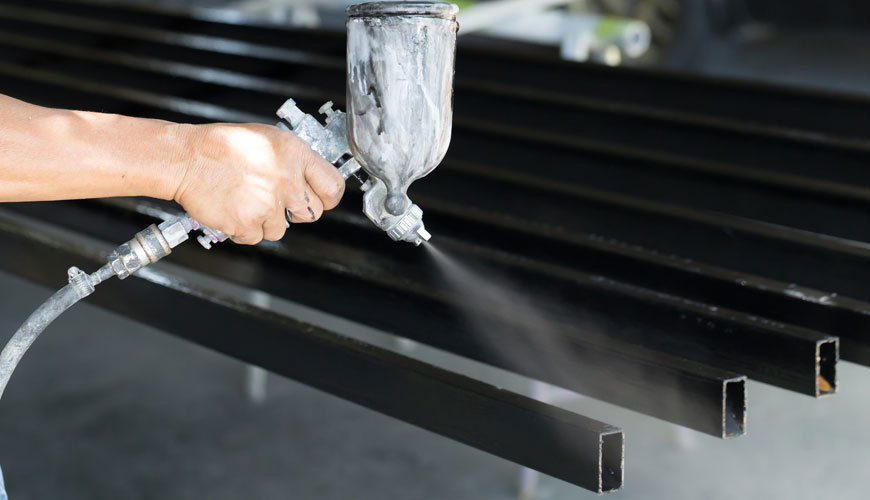

EUROLAB, with its state-of-the-art accredited laboratories and expert team, provides precise and fast testing services within the scope of EN ISO 4623-1 testing. This standard describes a test procedure for evaluating the protective effect of paint or varnish coatings on steel against filamentous corrosion caused by a mark drawn across the coating. It is only suitable for evaluating the performance of the tested coating/substrate combination. It is not suitable for estimating the performance of the coating on different surfaces.

A scratch mark on a paint or varnish coating on metal can lead to various types of corrosion, such as blistering of the coating, corrosion of the metal beneath the coating, as well as filamentous corrosion.
Filamentous corrosion tends to develop under certain conditions of temperature and relative humidity and when traces of acid, base or salt are present under the paint coating or at breaks in the coating. These conditions are often found in marine or industrial environments. Starting from the scratch mark, a certain amount of insufficient corrosion of the coating will always occur. However, filamentous corrosion is considered to be present only if the typical filamentous pattern is clear.
There are two alternative procedures based on starting by immersion in sodium chloride solution or exposure to salt mist, respectively. The immersion technique is generally preferred for materials that are air-drying and have low durability.
For systems with high durability, such as automobile polishes applied to phosphated steel, the dipping technique may not produce filamentous corrosion and for these systems it is preferable to adopt the salt fog technique. In such cases, the required exposure time to salt fog will depend on the durability of the material being tested, but should seldom be exceeded. It should be noted that exposure to salt mist is not normally suitable for materials with low strength, because in such systems heavy general corrosion from scratch marks usually occurs and filamentous corrosion is suppressed.
EUROLAB assists manufacturers with EN ISO 4623-1 test compliance. Our test experts, with their professional working mission and principles, provide you, our manufacturers and suppliers, the best service and controlled testing process in our laboratories. Thanks to these services, businesses receive more effective, high-performance and quality testing services and provide safe, fast and uninterrupted service to their customers.
To get an appointment, to get more detailed information or to request an evaluation, you can ask us to fill in our form and reach you.